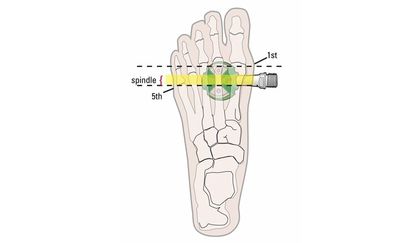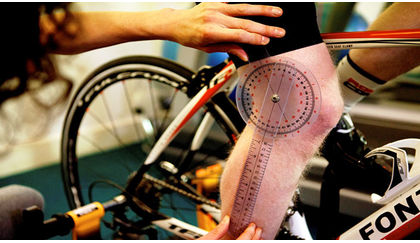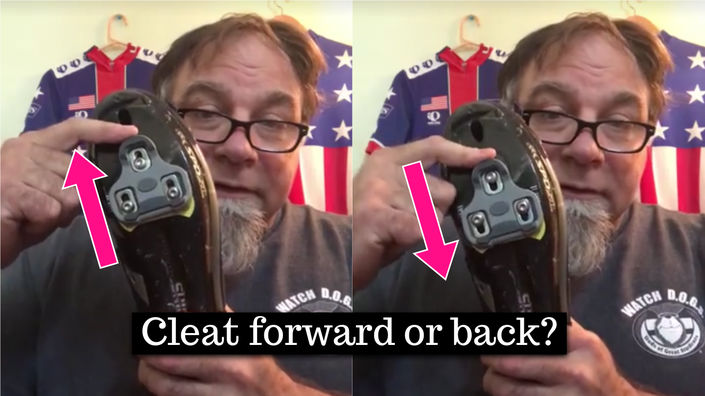Positiong cleats on a cycling shoes is important to comfort, safety, and power transfer and output. Getting your cleats setup correctly comes just after getting your saddle position right, which is why a good bike fit addresses those aspects and more.
In the video below, Paul Swift Founder and Owner of CyclePoint and BikeFit and an 8-time U.S. National Track Cycling champion, explains some history about cleat fore-aft positioning and why he thinks you should set them further back today.

Paul refers to traditional advice of placing cleats so that the center of the pedal axle/spindle is inline with the ball of the foot / the first metatarsal head of the big toe. While this made sense for older shoes and cleat systems (wow — those classic leather shoes he pulls out!), modern cycling shoes, with their far more rigid soles, call for a further back cleat position that puts the pedal axle/spindle somewhere aft of the first metatarsal-phalangeal (MTP), perhaps balanced evenly between the first and fifth (pinky toe) MTP, and as far back as all the way to the fifth MTP.
RELATED: The art of clipping in
There's more to setting up cleats than just fore and aft positioning; there's also angle, side-to-side positioning, and if the cleats and/or pedal system have rotational float. Even so, do consider Paul's advice and sensible explanation. Give it a try and let us know how it goes for you.
If you're still having trouble dialing in your cleat position, consider getting a professional bike fit. More and more local bike shops have in-house bike fitters that can help.

RELATED ARTICLE:
10 tips to choosing the right cycling shoes
Looking to get into time trial or triathlon and unsure whether to do it on your road bike or to fork out money for a real TT bike? Here is the answer... READ MORE

RELATED ARTICLE:
Bike Fit: Does size matter?
Cycling's world governing body is poised to allow motorized bicycles in select events next year... READ MORE



